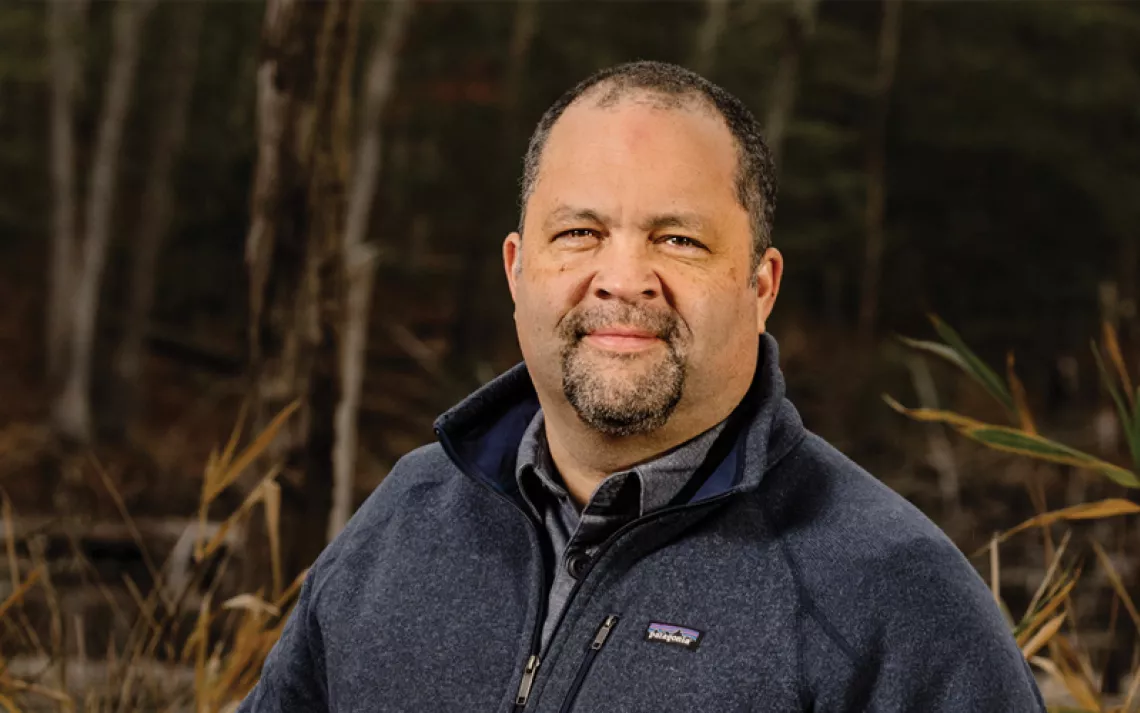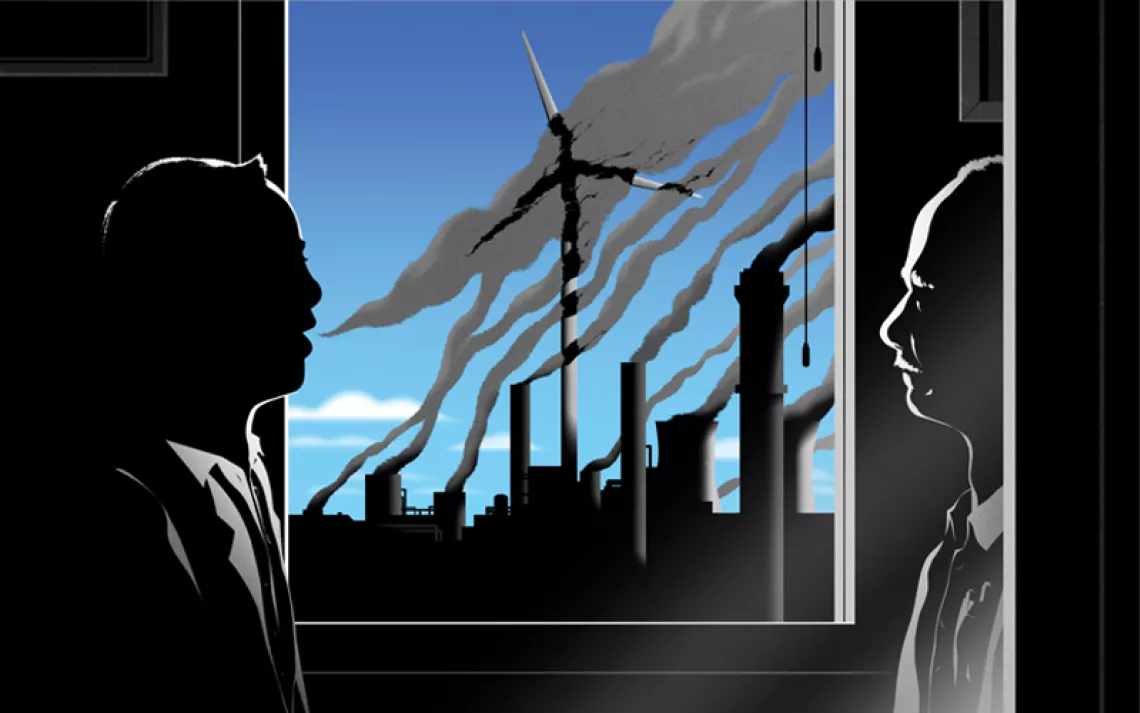Your Own Private Wind Turbine
It worked for the solar industry! Domestic wind power is now a thing.

Photo by Kardd/iStock.
In pursuit of cheaper and more efficient power, the wind industry continues to enlarge its wind turbines—by 2025, offshore turbines could be taller than the Eiffel tower. Farms with fewer, bigger turbines require simpler infrastructure and less maintenance than those with more, smaller turbines with the same capacity. For utility-scale wind, bigger is better.
But there’s another end to the scale: small wind turbines sized for private homes. These small turbines, typically from 20 watts to 100 kilowatts, represent an industry-within-an-industry that’s growing in its own right.
The U.S. Department of Energy has online resources about when, why and how to install a small wind turbine on your property if you have space, permits, and wind. If you really want to commit, wind energy pairs beautifully with solar; wind tends to blow strongest in the months when the sun dims, and the sun shines brightest when the wind dies down.
An obvious consideration for installing a small wind turbine is whether you have sufficient wind to turn it. According to a DoE wind resource map, the United States is windiest in a column right down the middle of the country through the Dakotas, Nebraska, Kansas and the panhandles of Oklahoma and Texas; harnessable winds spill into the midwestern states as well. For a more hands-on appraisal of your wind resource, buy a wind measurement system or just look at local greenery: trees (conifers and evergreens particularly) in windy areas may grow slanted.
What about the presence of the turbine itself? Depending on where you are, you may need to consider zoning regulations. Since commercial turbines are smaller and usually stand alone rather than in a grove of other turbines, they don’t threaten birds as much as utility-scale turbines. Regarding noise, the DoE claims that “the sound of the wind turbine may be picked out of surrounding noise if a conscious effort is made to hear it, a residential-sized wind turbine is not a significant source of noise under most wind conditions,” and manufacturers like Primus Wind Power feature low noise as a selling point. As for how it looks above your house, that’s a matter of taste.
A study by Navigant Research forecasts that the sum global capacity of small turbines—176.4 megawatts in 2017—will grow to 446.0 megawatts by 2026. The vast majority of small turbine installations currently are (and Navigant predicts will continue to be) in Asia, which is where the company Avant Garde Innovations operates. Avant Garde plans to introduce its $750 wind turbine—equivalent in price to an iPhone. The 300 kilowatt prototype turbine has a projected 20-year lifespan. Avant Garde’s ambition, per their mission statement, is to spread energy independence and thereby “usher in our world a cleaner environment, new economic prosperity and social change.” The turbine is expected to reach the market “by mid 2017.”
Another maker of small turbines, Pika Energy, named for the endangered mountain-dwelling lagomorph, has been lauded by the United States Department of Energy for their work streamlining the design and manufacture of wind turbines. Their T701 turbine, which was displayed in the DoE headquarters in February 2016, is the product of funding from the DoE’s Competitiveness Improvement Project (CIP), an initiative that invested $3.9 million into nine wind turbine manufacturers across the country.
With the DoE’s investment, Pika reduced the consumer cost of its T701 turbine by $3,000, down to about $6,000, further reducible by federal tax credits.
Pika advertises that same turbine alone can supply 20 to 60 percent of the average home’s electricity consumption. Like other small commercial turbines, Pika’s turbine emphasizes ease of installation and durability (20 years). The turbine can also connect to WiFi to be remotely monitored, updated, and troubleshot by Pika Energy technicians.
Got a yacht? Stick a turbine on it. Primus Wind Power, another Competitiveness Improvement Project subcontractor, makes yacht-mounted turbines that sprout from the stern in an impression of the world’s gangliest airboat. Primus’ Air Breeze and Air X turbines are designed to resist salt, heat and chill; of the two, the X is intended to harness faster winds, at the cost of some noise. Primus sells grounded counterparts as well.
United Wind is one of several companies adopting a “wind lease” business model, an adaptation of rooftop solar panel lease business models. United Wind does not sell turbines as products like Pika or Primus do; rather, they install and maintain the turbine for free, then charge a fixed monthly rate for the electricity produced. United Wind’s fixed payment, they solicit, undercuts typical utility bills, and is not subject to rising electricity costs: a United Wind rate is fixed for 20-30 years.
This article has been corrected.
 The Magazine of The Sierra Club
The Magazine of The Sierra Club



